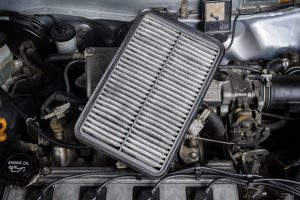High dampness can make you feel either hot and sticky or cool and sticky and make your home smell a bit strange too. When we cut down the temperature of the air and invest in cooling to fight that “sticky” feeling, the results are “cold and sodden.”
Visit https://furnace-repair-vancouver.ca
Most of us think high humidity happens just in the midst of the pre-summer months, frankly, the most essential conditions of the year to address humidity issues is during spring and fall when temperatures are immediate (circulating air through and cooling isn’t required) and outside dampness levels are high. Entire House Ventilating Dehumidifiers address these clumsy conditions suitably and will make your home pleasant all year round.
As demonstrated by the Environmental Protection Agency, for most extraordinary comfort, indoor relative dampness (RH) should be kept up in the region of 35% and a half. Indoor sogginess can’t be sufficiently or adequately controlled with a ventilation system/cooling system alone. Ventilation systems are proposed to cool a privately arranged on a temperature set point, dehumidifiers’ consideration solely on clearing sogginess. While various people assume that twisting the indoor controller influences it to work speedier, it is absolutely false. Tweaking the indoor controller beyond what many would consider possible up or the separation down in actuality just impacts the radiator or AC structure to work for additional.
The IOM report covered pertinent literature published up to late 2003 on a wide range of health effects including asthma. The findings regarding asthma were that sufficient evidence existed for associating the presence of mould or other agents in damp buildings with asthma exacerbations and that limited or suggestive evidence existed for associating exposure to damp indoor environments with asthma development. The committee concluded that excessive indoor dampness is a public health problem and that prevention or reduction of this condition should be a public health goal.
Read full story at National Center for Biotechnology Information.
High humidity levels in our homes and businesses leads to dust mites, and damaged floors / furniture. It is the main culprit why the indoor air feels warm and sticky even with your HVAC system turned on to its maximum power. As a result, we use our cooling system too much, which results in higher utility costs and needless repairs.
Your engine compensates for lower amounts of oxygen by consuming more fuel to produce sufficient power. Thus, if you notice that your fuel economy is going down, it could be an indication that the air filter needs replacing. However, this is true only for carbureted cars, most of which were made before 1980. Newer cars with fuel-injected engines have onboard computers which calculate the amount of air taken into the engine, and adjusts the fuel flow accordingly. Therefore, the cleanliness of the air filter on newer cars shouldn’t significantly affect fuel economy.
A messy air duct is the number one reason behind an HVAC failure. A filthy ductwork limits the wind stream into your HVAC system’s air handler. This confined wind stream puts an extra strain in your system and could, after some time, wear out the engine and make your system overheat and even complete breakdown. Replacing your ductwork is a little expensive but it will surely benefit us in the long run.
Dirty ductwork makes your fan engine work harder, which in turn, results in increased energy consumption. A simple way to reduce your utility costs is to maintain your unit on a consistent basis. In addition to frequent pipe breaks, a untidy air duct reduces the efficiency of your Heating, Ventilation and Air Conditioning System. This can prompt excessive HVAC cleaning costs or a need to replace your HVAC unit or HVAC parts sooner than you anticipated.
To learn more, check this video out:

